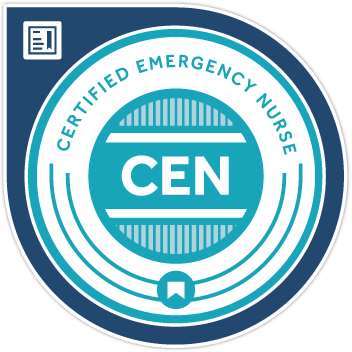*Some of this content has been excerpted from the new book “Beyond Burnout, Overcoming Stress in Nursing and Healthcare for Optimal Health and Well-Being” (2023).
Healthcare is an inherently stressful profession. Situations that providers of healthcare services encounter on a regular basis are unimaginable to most people: life, death, and just about everything in between can be a “day in the life.” Only recently have some of the experiences of those providing direct healthcare services been profiled or highlighted by the news media, television, and social media—mostly because of the persistent effects of the global COVID-19 pandemic.
Stress at work is usually due to several intertwined issues. Ali et al. (2022) described the challenges (especially for frontline care providers) as the stress of taking care of multiple patients (or competing priorities), varying workload, and assignments; communicating with colleagues (sometimes difficult ones), the nurse’s or other healthcare worker’s personal life, environment factors, emotional or physical stress, supervisory reports, community support, and problem solving, to name a few. But what about those serving in indirect healthcare positions?
Unfortunately, leaders in healthcare are not imperious to the effects of stress. Never does a day go by where I do not read about another group of leaders suffering the effects of stress, fatigue and/or burnout (now including board members). The deleterious effects have certainly taken a toll on the healthcare industry with early retirement, job changes, and movement to private industry with a healthcare adjacent focus. Most made the move for survival.
Healthcare is a people business. Where there are people, there will be clashes in thinking, values, and beliefs. Some of the current stress has been potentiated by providing care for an overwhelming number of people who need it. In addition, providers must be competent in dealing with a variety of diverse types of people with different ethnic cultures, frames of reference, ages, faiths, educational levels, priorities and more. The neutrality nurses and other healthcare workers must exhibit is sometimes in itself stress-producing when conflict arises and is contrary to their own feelings or beliefs.
Numerous studies, both in and outside of healthcare, have analyzed the effects of stress for decades. Some of the negative occupational effects include reduced job satisfaction, stressed or fatigued workers who suffer health and well-being consequences, may be more apt to make mistakes, are often unable to sleep and rest effectively, are absent from work more often, and experience a host of psychosocial distress, as described in detail a decade ago in my doctoral dissertation about Leadership Fatigue (Waddill-Goad, 2013).
The new “corporate” business model of healthcare has fueled a dilemma for many clinicians and other healthcare workers who have chosen healthcare typically for its altruism. Private equity investment, the ground-breaking change in physicians becoming employed, for-profit health system acquisitions and more have only exacerbated the stress for those providing healthcare services. These changes in contemporary business practices have led to commercial value systems being instilled into professions that have been traditionally considered moral practice involving care and compassion (Roberts et al., 2012) and which may not be for the better.
These business changes coupled with the “usual” daily stressors has produced more strain for caregivers in an already stress-laden environment. And the global COVID-19 pandemic exposed the fragility of the entire healthcare system with the intrusion of politics resulting in controversial decision-making about how public health emergencies should be managed; thus, increasing the stress further for healthcare workers and causing a great deal of mistrust in the entire system for the population at large.
A multitude of studies have shown that nurses and other caregivers already have a heightened propensity for burnout. The very nature of caring for others, sometimes without the ability to set limits (of time, compassion, etc.), potentiates the possibility for burnout. Because burnout is known to result in physical, mental, and social consequences, why hasn’t it been more commonly discussed and addressed? We cannot just keep hoping things will either get better or go back to the pre-pandemic state.
Not only does burnout have personal consequences, but there are also organizational concerns that all translate to the bottom line, such as retention and turnover, employee satisfaction, clinical outcomes, medical errors, and patient satisfaction. Burnout is not a solely individual problem, as we know it stems from the social environment. Earlier this year, the American Hospital Association published an article about burnout “being the next pandemic” in healthcare (Burnout: The New Pandemic | AHA News):
“Fortunately, burnout is both avoidable and reversible when hospitals and health systems are willing to take the steps to grow a culture in which every worker has access to ways to decrease stress. Primary coping is taking away the factors causing the stress. Secondary coping is finding ways to deal with the remaining factors that cause stress. Both are needed.”
Ironically, in the same week on May 24, 2023 Berwick and Williams published an article in Time magazine (Hospitals Need to Focus on Social Drivers of American Health | Time) about how broken the United States healthcare system is – and what those in healthcare can do about it. Most of all healthcare costs are spent once people are already sick on myriad remedial interventions. Since the global COVID-19 pandemic, providers of healthcare services have become “disillusioned” since they know the social drivers of health have been largely ignored for decades leading us to where we find ourselves today — an overwhelming number of patients seeking services for delayed, untreated and/or chronic maladies.
Berwick and Williams (2023) also posited the known social drivers of health have been mainly ignored for profit. And health systems have methodically accumulated enormous wealth fueled by the makeup of corporate healthcare boards which rarely include clinicians (~15%) providing the services — who have a vastly different perspective than the financiers, private equity representatives, insurance brokers, etc. You can read more about private equity in healthcare here: Private Equity I Healthcare Report (berkeley.edu)
We also know mental health is just as important as physical health. On your best day, it is possible to make a tragic mistake with disastrous consequences in healthcare. Because stress, fatigue, and burnout have serious penalties for both individuals and ultimately organizations, the healthcare industry must make stress reduction in the work environment a priority. Effective awareness and innovative work redesign approaches must be considered and then implemented. Long-standing policies must be changed; processes must be reimagined, and practice must be remodeled.
In addition, the potential for violence and incivility on the part of patients, visitors, and healthcare workers is escalating and has added another layer of stress related complexity. Leaders must recognize these job stressors and implement sustainable health and safety interventions targeted for the needs of nurses and healthcare providers in frontline work settings focused on well-being. This will facilitate the overarching goal of improving health and safety for all (Roberts et al., 2012). In turn, this will lead to safer and better patient care leading to a better bottom line.
Consider these suggestions to improve where you work in 2024:
- Find the causes of stress and create a reasonable and sustainable action plan for mitigation.
- Create a health and well-being focused culture. Start by asking people what they need to do their best work.
- Redesign the work environment to meet the needs of both customers and the workforce.
- Build hardiness to the stressors by redirecting negative energy into “opportunity thinking” using mindset, mindfulness, and gratitude training.
- Ensure a safe environment for healthcare workers to focus on doing their best work to help others.
If you’d like to learn more about innovative strategies for burnout, improving work processes and culture, or facilitating a focus on health and well-being in your organization you can connect with me at drsuzi@suzi-inc.com.
Dr. Suzanne “Suzi” Waddill-Goad, DNP, MBA, RN, CEN, CHC has spent the last two decades working in healthcare organizations in interim leadership positions and performing operational consulting. She has used lean, six sigma and other process improvement methodologies to build cohesive teams driving innovative improvement in the work environment. Her leadership research about stress, fatigue and burnout has provided a framework to construct healthy work cultures with a focus on safety leading caregivers to a renewed sense of purpose and optimal well-being.


